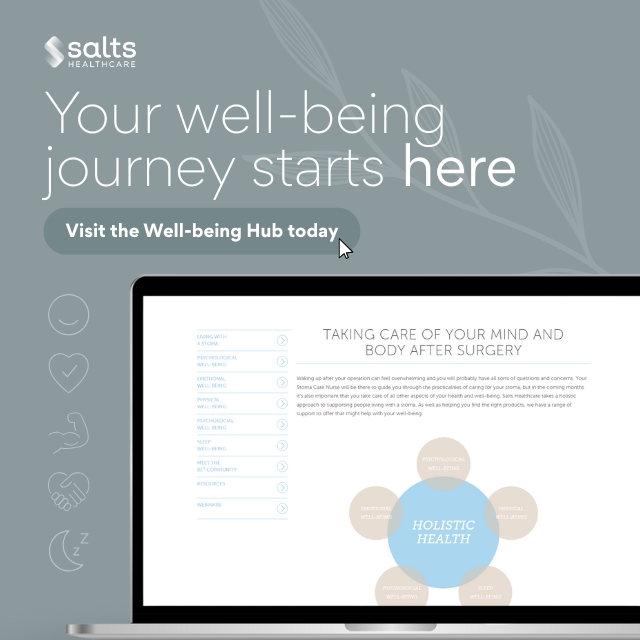
Stoma Helpline We’re here 365 days a year, 9am – 10pm: 0800 328 4257
Stoma Helpline We’re here 365 days a year, 9am – 10pm: 0800 328 4257

What is a parastomal hernia?
The term parastomal hernia is used to describe a bulge or swelling around/under the stoma that leads to problems with stoma function and appliance security. This usually occurs gradually and the hernia may increase in size over time.
Firstly it’s worth noting that hernias are very common, in fact up to 70% of ostomates will develop one. They occur when the edges of the stoma come away from the muscle, allowing abdominal contents (usually a section of bowel) to bulge out. When a stoma is created, the surgeon generally brings the end of the intestine out through the abdominal muscles, which provide support for the stoma. By making an incision in the muscle, a potential weakness is created.
It is rare that these hernias cause major complications, and the development of a hernia doesn’t mean you always need surgery (often you don’t) – but improving core strength and managing your weight can help improve comfort.
What causes a parastomal hernia?
There are many factors that contribute to the development of a parastomal hernia including:
- coughing and sneezing;
- straining: this can happen when lifting heavy objects or during strenuous activities such as gardening;
- infection at the site of the stoma or abdominal wound;
- muscles becoming weaker with age;
- being overweight;
- poor siting of the stoma;
- emergency surgery.
Exercising with a stoma
Having a stoma, or a stoma and a parastomal hernia, doesn’t mean you can’t exercise. After surgery you should allow yourself time recover, then provided you have an agreement from your doctor or stoma care nurse, you can introduce exercise and carefully build the intensity. Walking, running, dancing, swimming and cycling are good starting points, but in time it’s possible to do any sport/exercise with a stoma. Check out our active ostomate at home virtual sessions for inspiration.
Preventing a parastomal hernia
There are steps that you can take to try and prevent the formation of a hernia (although, as mentioned above, there are many reasons that a parastomal hernia may develop). Allow your body to recover after surgery and introduce exercise slowly – do not push yourself too hard too soon.
Wear support garments.
Strengthening your core muscles, strengthens the abdominal wall which in turn reduces the risk of a hernia forming, or can improve comfort if you already have a hernia. Pages six to 12 of our Active Ostomates brochure have some gentle exercises you can carry out at home. View brochure here.
Further information about parastomal hernias can be found in the booklets and article below. You can also call our free 24 hour helpline 0800 328 4257 and speak to one of our volunteers who can support and advise.




